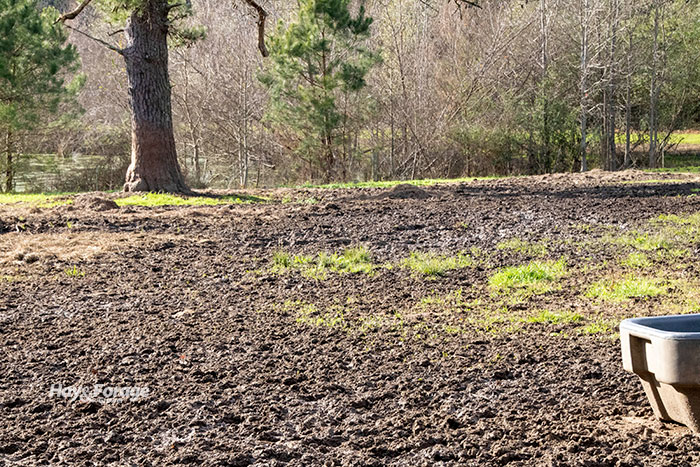
Snow isn’t the only thing cattle might be sinking their hooves in this season. Mud may also cover fields when hay is fed in the winter, and it can lead to more than just a mess. Mud can reduce animal performance and elevate the cost of production.
Walking in mud causes cattle’s energy demand to rise. Mud can also build up on an animal’s body and interfere with their ability to stay warm, further pushing their energy requirements. Jeremy Kichler with University of Georgia Extension says cattle in these situations may not consume enough feed to meet their energy needs.
“Research has shown when mud is 4 to 8 inches deep, the dry matter intake of cattle decreases 8% to 15% compared to dry conditions,” Kichler says. “When muddy conditions get really bad, with 1 foot of mud or more, dry matter intake can decrease up to 30%.”
Less hay consumption essentially translates to greater hay waste, which Kichler states can be as much as 60% to 90% if hay feeders are not used in muddy fields. This can add to expenses as farmers must purchase supplemental feed. Therefore, Kichler offers the following advice to minimize mud during winter feeding for more efficient production.
Survey the surface. Mud is more prominent around feeding areas – as well as water sources and gates – because of heavy hoof and tractor traffic. The standing pressure of a cow is roughly 27 pounds per square inch (psi). To put this into perspective, Kichler notes a human has a standing pressure of about 14 psi, and a 50-ton bulldozer’s is nearly 16 psi.
Different soil textures and surfaces have different load carrying capacities. While some soils are more capable to withstand weight, installing a feeding area with a gravel, sand, or concrete surface will provide a much better defense against animals’ standing pressure.
“Soft clay or sandy loam soils have the load carrying capacity of 14 psi, and clay soils have the capacity of 42 psi,” Kichler says. “Six-inch reinforced concrete has the load carrying capacity of 6,000 psi.”
Set aside a sacrifice area. Allowing animals to overgraze can expose bare soil, cause compaction, and impede on water drainage. This not only contributes to more mud in the winter, but can also inhibit a pasture’s productivity the following spring.
One solution to overgrazing is to make use of a sacrifice area. Animals are confined to these spaces to protect future plant growth throughout the rest of the field. Locate sacrifice areas on a part of a pasture with well-drained soils or a slight slope, and be diligent in removing manure, feed, and wasted hay from these areas to prevent the formation of mud.
Categorize hay quality. To ensure the success of a sacrifice area, strategically feed hay based on its quality. “When conditions get tough, the lower-quality hay can be fed and the waste can be used for bedding or footing around the hay feeders,” Kichler explains. “Every couple days, the higher-quality hay can be used. This would potentially reduce waste of this higher-quality forage.”
Incorporate new management practices. Consider unrolling round bales in a field to cover up mud and distribute nutrients over a large area or implementing a rotational grazing plan with centralized water and shelter for animals. Kichler suggests a fenceline feeding system is also an alternative to feeding hay.
“These structures can help reduce the effects of winter feeding in pastures and decrease hay waste,” Kichler asserts. “If the fenceline feeding systems are designed and placed correctly around the farm, then it may not be necessary to use tractors in the fields at all, thus reducing potential soil compaction due to winter feeding.”

Amber Friedrichsen served as the 2021 Hay & Forage Grower editorial intern. She currently attends Iowa State University where she is majoring in agriculture and life sciences education-communications and agronomy. Friedrichsen grew up on her family’s diversified crop and livestock farm near Clinton, Iowa.

